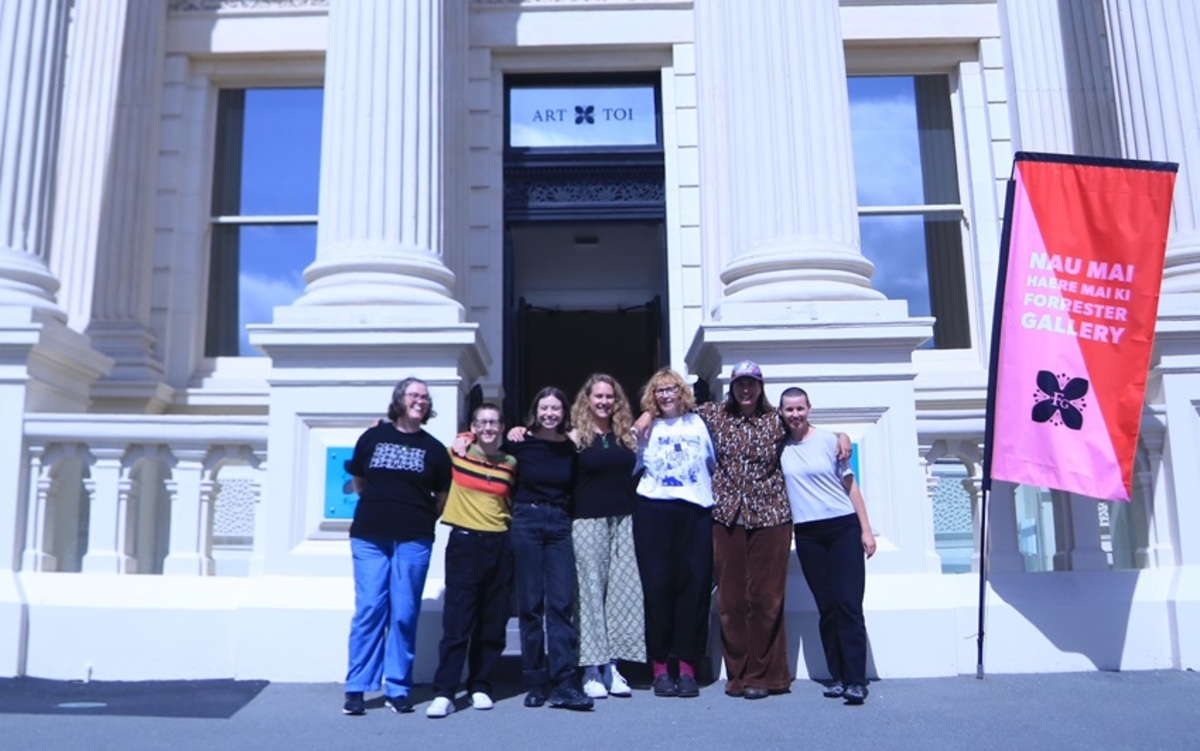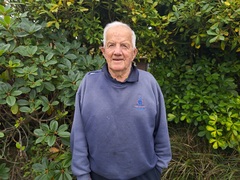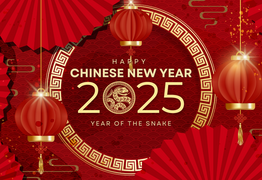New Forrester exhibitions stand alone but weave together
Ashley Smyth
31 January 2025, 2:12 AM
 Collaborating on exhibitions at the Forrester Gallery are (from left): Emma Kitson, Jess Nicholson, Megan Brady, Caitlin Rose Donnelly, Georgina May Young, Aroha Novak and Zoe Thompson-More. Photo: Supplied/Anna McLean
Collaborating on exhibitions at the Forrester Gallery are (from left): Emma Kitson, Jess Nicholson, Megan Brady, Caitlin Rose Donnelly, Georgina May Young, Aroha Novak and Zoe Thompson-More. Photo: Supplied/Anna McLeanRural Southland is maybe not where you would expect the next generation of Māori art to spring from, but that’s where you’ll find Caitlin Rose Donnelly (Ngāi Tahu, Kāti Irakehu, Kāti Mako ki Wairewa, Pākehā) most of the time.
The mother of two lives with her husband, contract milking on a dairy farm, and through her contemporary art expresses her experiences of mum-life intertwined with her journey of discovering her Māoritanga.
Of the four exhibitions she has brought together as a “curatorial artist” for Ōamaru's Forrester Gallery, her solo exhibition, is Kei te Haere Ahau - 'I am going'.
Caitlin came to the name after being inspired by listening to a panel discussion a couple of years earlier.
“I really loved that sentiment of drawing strength from the whenua (land) and from the awa (river), from our places, and tīpuna (ancestors) in that way.
The sheets and pillowcases are washed in wai (water) and paint, in an unlived-in house her chief in the fire service owned and offered to her.
The idea began as an experiment while Caitlin was completing her Masters at Dunedin School of Art.
“Then I kind of liked it, and it's just looking at motherhood every day. The washing, the washing . . . just the washing! And then the colours connecting that to, especially at that time, learning to be like, ‘I am Māori’.
Caitlin is adopted, and was raised by a Pākehā family in an open adoption, but with “iwi unknown” on her adoption booklet.
Late into completing her art degree, and around the time she had her first child, she found a cousin and more information about her iwi and started making those connections.
“It's been really slow . . . but I wanted to know the people, I wanted to know the marae, I wanted to know my cousins, know my whānau.”
Caitlin joined Paemanu (Ngāi Tahu Contemporary Visual Arts) where she has gained confidence with her art and Māoritanga.
“Simon Kaan (of Paemanu) was working at art school in Dunedin at the time, and he’s long left that position, but he stayed connected with me, and he watched me go from ‘unknown’ to same whakapapa line as him, and he's more like my uncle . . . and he's just really lovely, and he welcomed me into Paemanu, so that's how I've got all these amazing connections. And I would be nowhere without all these awesome people.”
To Caitlin, art is “nothing but a conversation”.
“I always hope my work and these shows will spark conversations. But also art is never made solely alone, it’s made by so many interactions, by relationships.
“It’s the manifestation of these things with deep thought, skills and material.”
Kei te Haere Ahau - 'I am going' involves a “big red maunga (mountain) slash waterfall”.
“Then a lot of black stacked on the sides. Kind of awa (river), kind of washing, and we look at te po and te kore in the black. And we look at wāhine, and we look at … a lot of feminine things in the red, and a lot of that non-violent nature. But then there's always that violent reality of being a woman at times,” she says.
Upstairs in the Forrester, with Iti Biti Matapihi, Caitlin is joined by Emma Kitson, Kate Stevens West, Aroha Novak, Georgina May Young, Alix Ashworth, Piupiu Maya Turei and Zoe Thompson-Moore.
This exhibition also explores the theme of motherhood and the everyday experiences it entails.
For example, Kate has children's toy houses she has painted, while Zoe’s work is made using “glitter” from tiny cut up pieces of her children’s chip packets.
Alex is bringing “beautiful ceramic takata (people)” which will accessible for children to play with, and there will be a lightbox, which doubles as a coffee table, with different interactive images and pictures.
Caitlin says the exhibition is a bit of a fun and interactive play, which captures both the joy and depth of the experience of motherhood.
The concept draws inspiration from the notion that motherhood can be seen as fleeting but also significant windows in time.
The group, each member of which Caitlin has met through a number of random interactions, has “had some really cool conversations” over Zoom for the past few months, she says.
“Just talking and saying what we want to show, what we want to talk about.”
The third exhibition, Broken Narratives, is a collaboration between Caitlin and Victoria McIntosh (the artist behind the Desserts of Discontent exhibition which has just ended). It explores the intricate realities of adoption through creativity, and reflects the fragmented, yet rich stories adoptees have to tell.
Victoria is also adopted, although hers was a closed adoption.
“Me and Victoria are going to look at adoption differently, a bit yin and yang,” Caitlin says.
The exhibition highlights the unique and shared challenges both artists have faced through their different experiences.
“I met Victoria when I was studying, years ago when I was in undergrad in the jewellery studio,” Caitlin says.
“At first I was studying her work and then . . . I got to meet her. Fan girl moment. We bonded quickly over our adoption experiences, although they are in different generations and stories. She’s been an amazing support since and I’m glad to her call a friend.
“I’m very honoured she accepted this opportunity to tell our stories together.”
Caitlin and Victoria will be joined by leading academic scholar of Māori and Public Health in Aotearoa and University of Canterbury Te Whare Wānanga o Waitaha associate professor Dr Annabel Ahuriri-Driscoll tomorrow (Saturday, February 1) for a kōrero at the gallery.,
Dr Ahuriri-Driscoll’s PhD investigated the concept of identity as it features in the lives and experiences of Māori adoptees. The kōrero will take place at 1pm.
The fourth exhibition, in the Forrester’s main gallery, is Poipoia te Kākano.
Allison Beck, Kate Stevens West, Jess Nicholson, Megan Brady and Emma Kitson join Caitlin as they express and celebrate their individual journeys of discovering and reconnecting with their whakapapa.
This project celebrates the significance of ancestry, heritage, and cultural identity through diverse artistic practices.
By examining both the pride and challenges associated with this journey, Poipoia te Kākano illuminates the enduring impact of whakapapa on contemporary life.
“We were looking and speaking about our own whakapapa journeys. Me, myself, coming to it later in life, and learning how to connect and learning everything, you know?”
Some of the others had similar experiences to Caitlin, while others connected more once they had children.
“I've always been met with such lovely, ‘This is your place, you belong here’. Like, you go with all these fears, and then you meet with this loveliness.
Forrester Gallery curator Anna McLean is excited about hosting the exhibitions.
“I think there is a need for more, kind of, multiculturalism, biculturalism, and a commitment to te ao Māori.
“I think it's been really great to work with Caitlin and bring in, and going into our extension.
“There's a lot going on, but equally, all four (exhibitions) talk about different things, while also being really collaborative.”
All four exhibitions open tomorrow (Saturday, February 1) and run until April 6.




